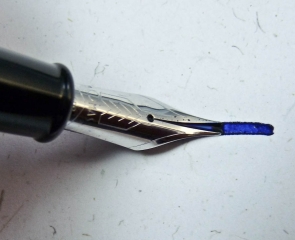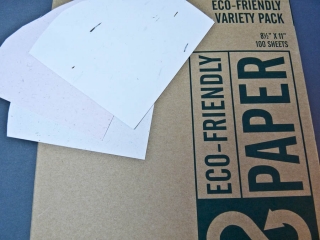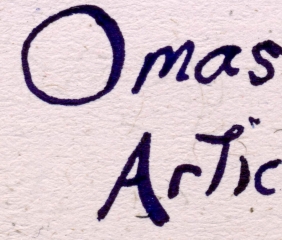The Wahl Company is still in business today. If you are a man and had a trimmer used on your hair at the barber you most likely experienced one of their products. Sadly, they do not make writing instruments anymore having sold that division to Parker in the 1950s.

Years before they were absorbed Wahl itself absorbed a firm to buttress their market leading Eversharp mechanical pencils. Boston Fountain Pen Company made good quality pens and had a few nifty patents for an inner cap and roller clip. They were always a bit short on capital, however, and Wahl knew a good thing when it saw it. After the purchase in 1917 the old Boston marked stock was used up and eventually Wahl started sticking its name on the barrels and nibs.

So the Boston pen became the Wahl Tempoint pen. Tempoint rolls off your tongue and has a nice sound but the meaning is pretty nebulous. It’s said that it is supposed to mean “tempered point” to bring to mind flexibility and strength but in my head also conjures up the idea of “temporary point”. Anyway, the catalog of the time says the point is crafted with a special “hand hammering process” and the iridium is “fused” not “annealed” to the point for a longer life. I’m thinking if that’s the case I want to be annealed for my personal longevity.
Until the introduction of the Wahl Metal Pen these warmed over Boston pens were what was peddled. Still, they were on par with the best black hard rubber products of the time. In this post I’m showing off a simple chased BHR Tempoint eyedropper. In the 1919 catalog this model is called the “Ardmore” which may or may not be a model name. I say that since next to all the names in this book are the legend “Telegraph Word” which makes me think that these tags were used for orders via that method. One of the best things about the catalog other than the pregnant advertising prose is an illustration used a few times of a wing-collared businessman holding a pen the size of a baseball bat. It’s just superimposed over his hand and gives a certain surreal mood to the page.

My pen came to me by way of Paris a few years ago. I was lucky that the original box and instruction insert were with it which shows it’s an early model after the change in ownership since on the lid are the words “Heretofore known as the Boston Safety Pen”. Does it get quainter than that? It fills with an eyedropper which is the simplest ink reservoir system for a fountain pen. You unscrew the section and squirt ink directly into the barrel with something similar to, well, an eyedropper. The nib is a small stub which has a nice, sharp feel to it.

The other noteworthy thing about the pen is that it came with a skull clip. The French seemed to keep using aftermarket clips longer than other places and I find this one to be especially interesting. I did a blog post about it a while ago here.
So, this is a rather unremarkable but strangely satisfying pen. An eyedropper is the fountain pen stripped to the core and it’s always good to go back to basics.



































